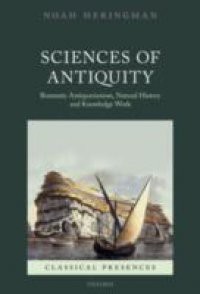In the course of the eighteenth century, discoveries ranging from Tahiti to Pompeii initiated a scientific turn in the study of the past. Seeking a formal language to display these new findings, Romantic-era plate books presented a wide array of objects as ancient relics. This proliferation of antiquities, a product of old affinities between natural history and antiquarianism, provided new material for the formation of archaeology, geology, anthropology, and othermodern disciplines. Sciences of Antiquity traces the production of five scholarly plate books on subjects of major literary and scientific interest at the time: South Pacific voyaging, Mount Vesuvius, ancient Greek vases, monuments in English cathedrals, and the geology of southeast England. Focusing on illustrators, fieldworkers, and ghostwriters associated with this type of scholarly publication, Heringman explores how the expertise acquired by these largely self-educated intellectuals precipitated amajor shift in the way research was done - from patronage to professionalism. Their scholarship and technical skills demanded recognition, sparking conflicts over the division of labour and the role of institutions such as the Royal Society and the Society of Antiquaries. Ambitious, collaborative plate books,such as The Collection of Etruscan, Greek, and Roman Antiquities (1776) and Sepulchral Monuments of Great Britain (1799), forged a broader and deeper perception of antiquity as extending far beyond the Greco-Roman world.


















